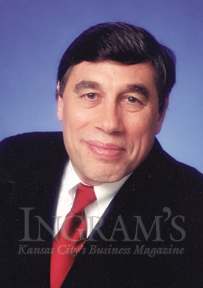small business adviser
by richard russakoff

Why do many great small companies fail to make the leap from a "mom
and pop" company to a medium-size, professional company? Seventy-six
percent of all companies have fewer than three employees, and less than
4 percent generate more than $1,000,000 in sales. Growing a company beyond
10 employees takes courage, foresight and, hardest of all, the ability
to reinvent yourself at each level of growth. Quite simply, what took
you to one level will not take you to the next.
The first step to take as a leader is to determine your company’s
current growth stage. Stage I, externally sales driven, is all about survival.
Generally, there are fewer than 10 people in the company. The company
has loose structures, a flexible and creative environment, lots of trial
and error, and a family environment. In this stage, the mission is clear—bring
in sales and generate cash flow.
By Stage II, the company has a niche in the marketplace and sales of $1,000,000
or more. The focus now shifts internally and is operations driven, with
tasks delegated and supervisors hired and promoted. Functional departments
emerge and many of the people who helped the CEO launch the firm are promoted
and given raises in appreciation of their hard work.
Stage III is often characterized as chaotic. Acceleration leads to turbulence.
With more transactions, more clients, more personnel, the systems that
used to work no longer do. Communications break down, the company loses
touch with customers, and barriers emerge among departments. At Stage
III, the CEO may also lack clarity of vision and not really know what
comes next. With an even greater internal focus, the company performs
reactively instead of proactively. This is where the recreating and transforming
begins.
In order to get this far, the CEO must demonstrate the ability to do three
things:
1. As the company goes from Stage I to Stage II, the CEO must be
able to delegate. A business owner who cannot turn over tasks and responsibilities
to others and allow them to make mistakes will never become a CEO. In
order to delegate and grow, you must rely on good, well-trained people
capable of making independent decisions on a day-to-day basis.
2. Be ready, willing and able to fire people who do not have the
skills to take the company to the next level. Managing people is one of
the greatest challenges in growing a company. CEOs can find many reasons
to continue to employ personnel who are holding the team back. But a smart
leader knows great people are three times more productive than good people—and
it is your job to hire the best and fire the pest.
3. Reinvent yourself. As you grow beyond 25 people, your company
requires systems and solid organizational skills. This requires most CEOs
to re-focus their energies, upgrade their skills, and get out of their
comfort zones. This is a good time to join CEO groups where you will be
able to interact in a safe environment with other CEOs facing similar
challenges.
A professional company has the right people, the right processes, and
the right culture in place. The business is no longer driven by personality,
but by systems, leaders, and managers who understand what their job is.
The mantra we use is: "Managing the status quo is far more dangerous
than launching into the unknown."
Rich Russakoff is CEO of Bottom Line Consultants. He can be reached by
phone at (800) 359-2521 or go to his Web site at www.bottomlineconsultants.com